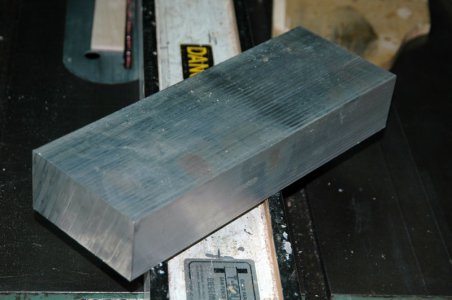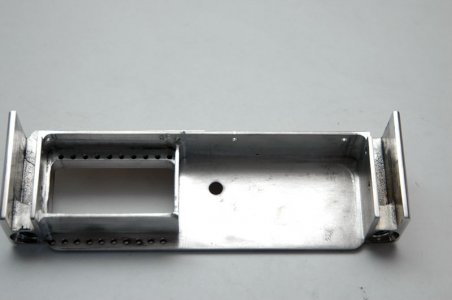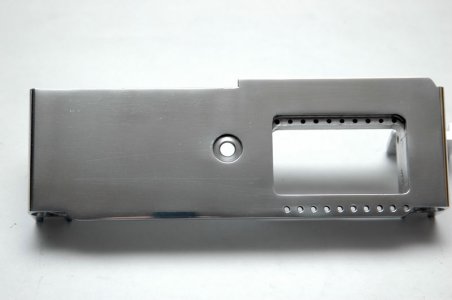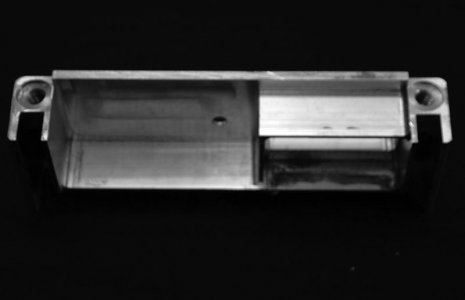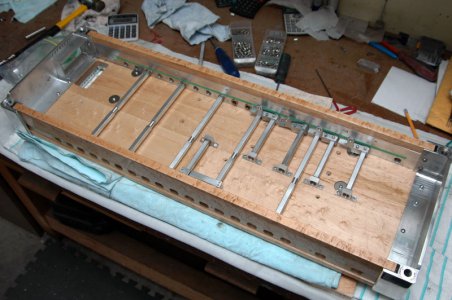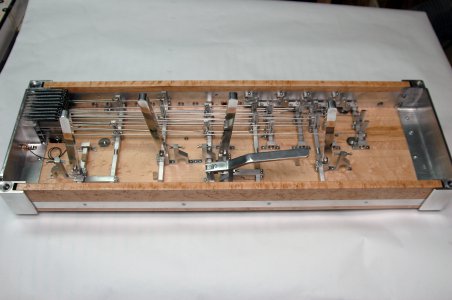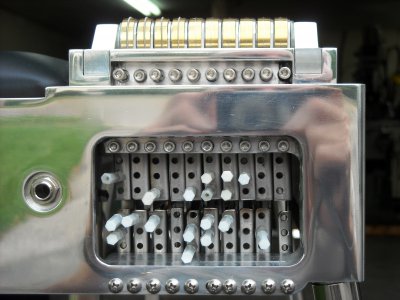I would like to start a new thread describing this hobby of mine making the pedal steel guitar.
I'll start off with a full pic of the pedal steel and name some prats so you all have an idea of what's what.
I started a thread earlier but t fell by the wayside as threads often do when we get busy with a project.
Here you see the BenRom pedal steel guitar, so called because you play it with a steel bar in your left hand and also, more importantly, with a series of pedals and knee levers that are used to change the pitch of the strings to a tuneable note.
In both ends you see the aluminum plates that cover the end of the wood body and wraps around the front and back. They are called the ENDPLATES. On your right you see the tuing keys that are attached to the KEYHEAD. On the left side you see the rounded brass pieces. They are part of the CHANGER which works together with other parts to change the pitch of the strings.
The aluminum plate that wraps around the changer and the electro-magnetic PICKUP is called the TAIL PIECE or the CHANGER HOUSING.
In the lower extremities we have the 4 legs, made out of stainless steel and are height adjustable. These are one of the few parts I don't make myself.
You also see the PEDALS attached to the PEDAL RODS which change the pitch of the strings, as well as the KNEE LEVERS that hang down from the wood body and are barely visible in this pic.
I will try to get on this thread more diligently and post more and detailed pics as I have time.
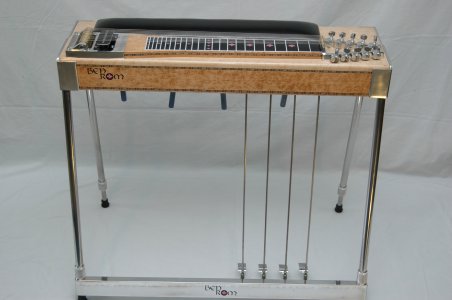
Hope you will enjoy it!

I'll start off with a full pic of the pedal steel and name some prats so you all have an idea of what's what.
I started a thread earlier but t fell by the wayside as threads often do when we get busy with a project.
Here you see the BenRom pedal steel guitar, so called because you play it with a steel bar in your left hand and also, more importantly, with a series of pedals and knee levers that are used to change the pitch of the strings to a tuneable note.
In both ends you see the aluminum plates that cover the end of the wood body and wraps around the front and back. They are called the ENDPLATES. On your right you see the tuing keys that are attached to the KEYHEAD. On the left side you see the rounded brass pieces. They are part of the CHANGER which works together with other parts to change the pitch of the strings.
The aluminum plate that wraps around the changer and the electro-magnetic PICKUP is called the TAIL PIECE or the CHANGER HOUSING.
In the lower extremities we have the 4 legs, made out of stainless steel and are height adjustable. These are one of the few parts I don't make myself.
You also see the PEDALS attached to the PEDAL RODS which change the pitch of the strings, as well as the KNEE LEVERS that hang down from the wood body and are barely visible in this pic.
I will try to get on this thread more diligently and post more and detailed pics as I have time.

Hope you will enjoy it!



